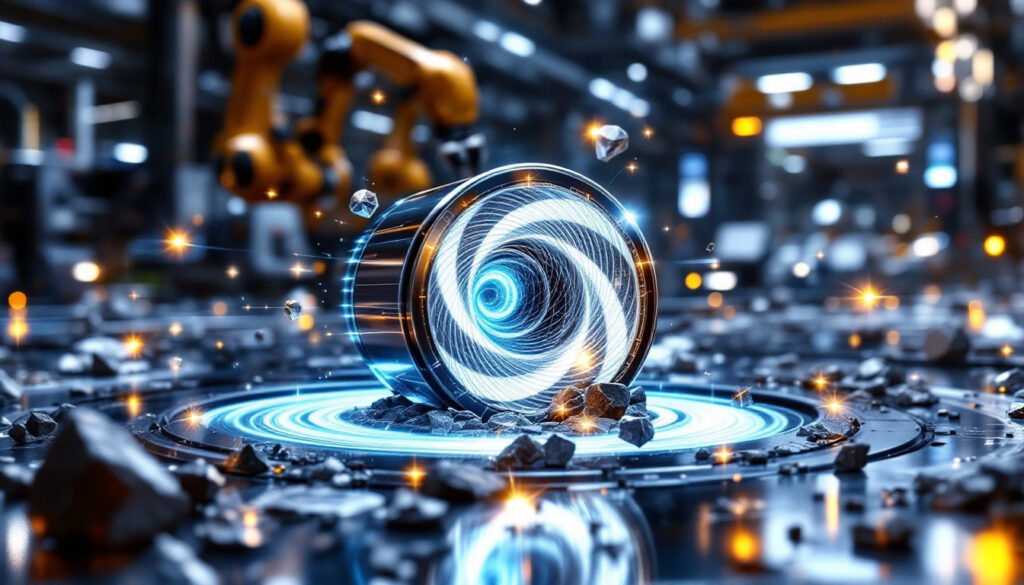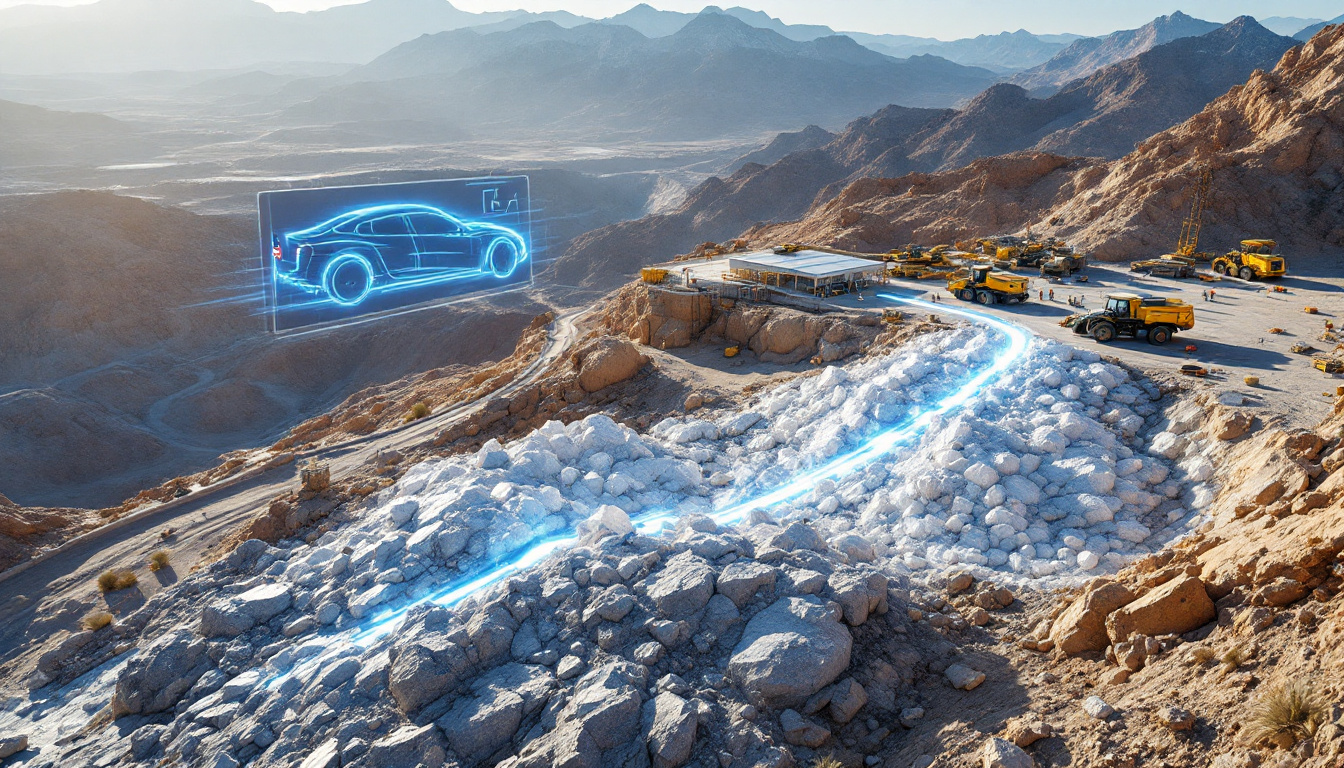Panasonic's Closed-Loop Battery Recycling Initiative: Pioneering Sustainable Battery Production
In a groundbreaking move toward sustainable battery production, Panasonic Energy has launched Japan's first closed-loop recycling initiative for automotive batteries. This innovative approach represents a significant step forward in addressing the growing environmental concerns around battery manufacturing and positions Panasonic as a leader in sustainable energy solutions.
What is Panasonic's New Closed-Loop Recycling Initiative?
The closed-loop recycling initiative represents Panasonic's commitment to creating a more sustainable battery production ecosystem. This battery-to-battery process focuses on recycling nickel from manufacturing scraps at Panasonic's Osaka factory, with plans to expand to other critical materials in the future.
The Battery-to-Battery Process
Panasonic Energy has formed a strategic partnership with Sumitomo Metal Mining to implement this pioneering initiative. What makes this partnership particularly noteworthy is that it creates a truly closed system—materials from Panasonic's own batteries are exclusively recycled back into their production line.
"Building a sustainable recycling scheme for end-of-life lithium-ion batteries is crucial for the future expansion of EVs," stated Kazuo Tadanobu, CEO of Panasonic Energy, highlighting the company's forward-thinking approach to sustainability.
The process begins with collecting battery scraps from Panasonic's Osaka manufacturing facility. These materials are then processed to recover valuable nickel, which will be refined and repurposed as cathode material for new batteries. This represents the first closed-loop recycling initiative specifically for Panasonic's automotive battery production.
Key Implementation Timeline
The initiative follows a carefully structured timeline. The initial phase focuses exclusively on nickel recycling, leveraging Sumitomo's expertise in non-ferrous metal processing. Beyond 2026, Panasonic plans to expand the program to include lithium and cobalt recycling, further reducing dependency on newly mined materials.
Panasonic has set an ambitious target of achieving 20% recycled cathode material content in its automotive batteries by 2030. Industry analysts suggest this could potentially increase to 50% post-2030, positioning Panasonic ahead of competitors like CATL, which aims for similar closed-loop goals by 2025.
How Does the Recycling Process Work?
The technical intricacies of Panasonic's recycling process represent a sophisticated approach to material recovery and reuse, involving specialized facilities and advanced refining techniques.
Recycling Facilities and Infrastructure
The recycling process begins at Panasonic's manufacturing facility in Osaka, where battery scraps are collected and sorted. These materials are then transported to Sumitomo Metal Mining's Toyo Smelter & Refinery for initial processing.
Additional refining takes place at the Niihama Nickel Refinery in Ehime prefecture, where specialized hydrometallurgical processes extract high-purity nickel suitable for battery production. This multi-stage approach ensures maximum recovery rates while maintaining the high quality standards required for automotive battery components.
To support this initiative, a significant investment of 47 billion yen (approximately €358 million) was made in 2021 to expand cathode production capacities. This investment reflects the substantial commitment required to establish effective recycling infrastructure at scale.
Technical Approach
The recycling process employs a combination of mechanical and chemical processes. Initially, battery scraps undergo mechanical separation to isolate different components. The nickel-containing materials then undergo hydrometallurgical processing, which uses aqueous solutions to extract and purify the metal.
Energy consumption metrics for this process are estimated to be 50-70% lower than traditional nickel mining and refining, representing significant environmental savings. The refined nickel is then reprocessed into cathode-grade materials according to Panasonic's strict quality specifications before being integrated into new battery production.
Unlike some competitors who use pyrometallurgical techniques that require high temperatures, Sumitomo's refining methodology is described as "critical for maintaining material purity" while consuming less energy.
Why is This Initiative Significant for the Battery Industry?
Panasonic's closed-loop initiative represents more than just a corporate sustainability program—it signals a fundamental shift in how battery manufacturers approach resource usage and environmental impact.
Environmental Impact
The environmental benefits of this initiative are substantial. By reducing demand for newly mined raw materials by up to 20% by 2030, Panasonic will significantly decrease the ecological footprint associated with battery production. Mining's role in the clean energy transition is paradoxical, as mining operations for battery materials are often energy-intensive and environmentally disruptive, particularly in ecologically sensitive regions.
Lifecycle assessment (LCA) data indicates that using recycled nickel can reduce the carbon footprint of battery production by approximately 30% compared to virgin materials. Additionally, the process decreases waste from battery manufacturing, with an estimated 2,000 tons of scraps diverted from landfills annually.
The initiative also supports circular economy principles, which aim to eliminate waste and continually reuse resources. This alignment with UN Sustainable Development Goal 12 (Responsible Consumption and Production) demonstrates how industry leaders can contribute to global sustainability objectives.
Industry Leadership
As the first closed-loop battery recycling system specifically for Panasonic's automotive batteries, this initiative sets an important precedent for other manufacturers. It demonstrates the commercial viability of battery material recycling at scale and provides a blueprint for implementation.
The automotive battery sector accounts for approximately 60% of Panasonic's revenue, making this initiative strategically significant for the company's core business operations. By establishing this system now, Panasonic positions itself ahead of upcoming regulations like the EU's Battery Passport program, which will mandate traceability and recycled content in batteries.
"Closed-loop systems mitigate geopolitical risks in cobalt supply chains," notes one industry analyst, highlighting how recycling initiatives contribute to supply chain security in addition to environmental benefits.
How Does This Compare to Other Battery Recycling Programs?
While Panasonic's initiative represents a significant advancement, it exists within a broader context of industry efforts to improve battery sustainability.
Panasonic's Global Recycling Strategy
This isn't Panasonic's first venture into battery recycling. Since 2022, the company has maintained a similar partnership with Redwood Materials in the United States. However, a key difference distinguishes the Japanese initiative: it uses materials exclusively from Panasonic's own batteries, creating a truly closed system.
This dual-continent approach to sustainable battery production gives Panasonic unique flexibility in addressing regional differences in regulations and supply chain dynamics. While Redwood Materials recovers approximately 95% of battery metals compared to Sumitomo's estimated 85%, the exclusivity of Panasonic's Japanese program offers advantages in material traceability and quality control.
Industry Context
Panasonic's initiative reflects a growing trend of battery manufacturers investing in recycling technologies and infrastructure. Porsche, for example, is establishing a high-voltage battery recycling network that targets 90% efficiency by 2027, while Webasto and Cylib have formed a partnership praised for its "modular, low-energy recycling" approach.
Chinese researchers have recently announced a breakthrough in battery recycling technology using a solvent-based lithium recovery process that claims 99% purity—potentially revolutionizing lithium production for clean energy. This advancement could transform how lithium, often the most challenging component to recycle, is recovered from spent batteries.
Li-Cycle's hub-and-spoke model in North America represents another approach, with distributed collection points feeding into centralized processing facilities. Meanwhile, Northvolt's Revolt recycling plant in Sweden showcases the European approach to integrated battery recycling, further exploring Europe's battery recycling revolution.
What Are the Business Implications of This Initiative?
Beyond environmental benefits, Panasonic's recycling initiative carries significant business advantages that strengthen the company's market position and long-term resilience.
Supply Chain Security
One of the most compelling business rationales for closed-loop recycling is enhanced supply chain security. By recapturing and reusing critical materials, Panasonic reduces its dependence on volatile raw material markets, where price fluctuations can significantly impact production costs.
Nickel price volatility has reportedly dropped 30% in 2024 due to recycling investments across the industry. This stability provides Panasonic with more predictable material costs and production planning capabilities.
The initiative also mitigates risks associated with geopolitical tensions affecting supply chains. As one supply chain analyst notes, "Closed-loop systems buffer against China's rare-earth export restrictions," highlighting the strategic dimension of resource recovery.
Material Flow Analysis (MFA) conducted on Panasonic's supply chain demonstrates how recycling enhances resilience against disruptions, with redundancy in material sourcing reducing dependency on any single region or supplier.
Economic Benefits
From a financial perspective, the recycling initiative offers multiple advantages. Projected cost savings of $2.6 billion by 2030 through waste reduction represent a significant return on the ¥47 billion investment.
Beyond direct material cost savings, the program reduces waste disposal expenses, which continue to rise as regulations around battery waste become more stringent. Companies like Apple have demonstrated that closed-loop aluminum supply chains can save approximately $60 million annually—suggesting similar potential for battery materials.
Panasonic also gains competitive advantage through enhanced sustainability credentials, which increasingly influence purchasing decisions in the EV market. As automakers face pressure to reduce Scope 3 emissions (those from their supply chain), suppliers with lower-carbon processes gain preference.
The initiative also aligns with growing consumer and regulatory demand for sustainable products, positioning Panasonic favorably as markets increasingly prioritize environmental performance alongside traditional metrics like cost and quality.
What Does the Future Hold for Battery Recycling?
The trajectory of battery recycling points toward increased sophistication, scale, and integration into mainstream battery production.
Expansion Plans
Panasonic's roadmap includes expanding beyond nickel to include additional materials like lithium and cobalt after 2026. This phased approach allows the company to refine processes for the most valuable and easily recovered material first before tackling more challenging components.
There's potential for scaling this model to other Panasonic facilities globally, creating a network of closed-loop systems that optimize regional material flows. While the current target is 20% recycled content, industry experts suggest opportunities exist to increase this percentage beyond 30% by 2035 as technologies improve and more end-of-life batteries become available.
IDTechEx reports suggest that "design-for-recycling will dominate battery R&D by 2026," indicating that future batteries will be specifically engineered for easier material recovery, further enhancing recycling efficiency.
Industry Transformation
The broader battery industry appears to be moving toward standardized recycling processes and greater collaboration on recycling infrastructure. With global lithium demand projected to grow 500% by 2035, the economic case for recycling will only strengthen.
Emerging technologies like bioleaching methods for low-energy metal recovery and direct recycling (which preserves cathode structures rather than breaking them down to elemental metals) represent the next frontier in battery recycling innovation.
Policy developments will also shape the landscape, with the U.S. Inflation Reduction Act providing significant incentives for domestic battery recycling operations and the EU's Battery Directive establishing increasingly stringent requirements for recycled content.
As solid-state batteries begin entering the market, questions about their compatibility with current recycling infrastructure will need addressing, potentially requiring new technical approaches to material recovery. This evolution is part of broader efforts toward decarbonisation in mining and the clean energy revolution, showing how interconnected these sustainability initiatives have become.
FAQ: Panasonic's Battery Recycling Initiative
Why is battery recycling important for electric vehicle adoption?
Battery recycling addresses critical raw material constraints that could otherwise limit EV production. It reduces the environmental impact of battery manufacturing, particularly mining-related disruption, and lowers the lifetime carbon footprint of electric vehicles by up to 30%. These improvements make EVs more sustainable transportation options and help address consumer concerns about the environmental credentials of battery-powered vehicles.
How does closed-loop recycling differ from traditional recycling?
Closed-loop recycling ensures materials from a company's own products are recaptured and reused in new products from the same company. This creates a complete circular system rather than dispersing materials across different supply chains. The approach provides greater control over material quality, enhanced traceability, and typically higher efficiency than open-loop systems where materials move between different industries or applications.
What challenges exist in battery recycling?
Major challenges include establishing efficient collection systems to prevent battery materials from entering landfill waste streams. Economic viability at scale remains difficult without significant investment, while the technical complexity of separating battery components requires specialized processes. Maintaining material purity for reuse in high-performance applications presents another hurdle, as battery-grade materials require exceptionally high purity levels. Regulatory frameworks also vary globally, creating compliance challenges for companies operating across multiple markets.
How will this initiative help Panasonic meet sustainability goals?
This initiative supports Panasonic's mission of fostering a sustainable society by reducing virgin material requirements for battery production by up to 20%. It lowers carbon emissions associated with mining and refining raw materials, with estimated reductions of 30% for nickel-based components. The program demonstrates leadership in circular economy principles within the battery industry and helps Panasonic prepare for upcoming regulatory requirements like the EU Battery Passport system, which will mandate recycled content and material traceability. Furthermore, this approach supports broader industry efforts toward transforming the mining industry through ESG challenges.
Ready to Discover ASX's Next Mineral Breakthrough?
For investors seeking early notification of significant ASX mineral discoveries, Discovery Alert's proprietary Discovery IQ model delivers real-time insights into potentially transformative opportunities before they reach mainstream attention, providing a crucial market advantage that both new and experienced investors can capitalise on immediately.




